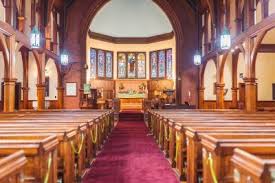Churches, as centers of worship and community, often find themselves in need of expansion or renovation to better serve their congregations. Whether it’s building a larger sanctuary, updating aging facilities, or improving accessibility, church improvements can be costly. Fortunately, several loan options are available to help churches finance these projects. Understanding these financing options can help church leaders make informed decisions about the best path forward.
1. Traditional Bank Loans
Traditional bank loans are one of the most straightforward options for church financing. These loans are often available through major financial institutions, and they come with fixed interest rates and structured repayment terms. A bank loan typically requires the church to demonstrate its financial stability, including proof of income, a solid credit history, and a detailed plan for the use of the loan.
While church loan can offer competitive interest rates, they also tend to have more stringent approval requirements. Churches may need to present detailed financial statements, including balance sheets and cash flow reports, to show that they can repay the loan. Additionally, banks may require collateral, such as church property, to secure the loan.
2. Church-Specific Lenders
Some lenders specialize in offering financial products tailored to the unique needs of churches and religious organizations. These church-specific lenders understand the distinct financial circumstances of religious institutions, such as fluctuating income levels and limited reserves. They are more flexible than traditional banks when it comes to approval criteria, making them an attractive option for churches with less-than-ideal credit histories or limited collateral.
Church-specific lenders may offer a range of loan options, including long-term loans with lower interest rates, short-term loans for urgent repairs, and even lines of credit for smaller, ongoing projects. These lenders often work closely with churches to ensure that the financing terms align with the organization’s financial capabilities.
3. SBA 504 Loan Program
The Small Business Administration (SBA) 504 Loan Program is another option for churches seeking to finance expansion or renovation projects. Although the SBA primarily supports small businesses, certain nonprofit organizations, including churches, are eligible for SBA-backed loans. The SBA 504 loan is designed to help organizations acquire fixed assets, such as property, equipment, or major renovations.
Under the SBA 504 program, the borrower typically pays for 10-20% of the project, while the remaining 80-90% is covered by the loan. The loan terms generally include a fixed interest rate for up to 25 years. This can provide churches with a manageable repayment schedule and lower monthly payments, which is especially important for organizations with limited income.
4. Congregational or Donor-Funded Loans
Many churches turn to their congregations to finance building projects. This can take the form of a loan from the church’s members, a capital campaign, or a special fundraising drive. Congregational loans can offer more favorable terms, such as lower interest rates or deferred repayment schedules, as they are often based on trust and mutual commitment to the church’s mission.
Capital campaigns are a common method for raising the funds needed for major church renovations or expansions. During these campaigns, the church may ask its members to make pledges of financial support over a period of time. These pledges can be used as collateral to secure financing from external sources or as the primary funding source for the project.
5. Government and Religious Grants
In addition to loans, churches may also be eligible for grants, particularly if they are involved in community outreach or preservation projects. While grants are less common than loans, they can be an excellent source of funding, as they do not require repayment. Some government programs and nonprofit organizations provide grants specifically for the preservation of historic church buildings or for projects that serve the greater good, such as food pantries or homeless shelters.
Churches seeking grants will typically need to demonstrate how their project aligns with the goals of the grant program, such as improving community welfare or preserving a historical landmark. The application process for grants can be competitive, so it’s essential to thoroughly research available opportunities and prepare a strong proposal.
6. Bond Issuance
For larger renovation or expansion projects, issuing bonds can be an effective way to raise significant amounts of capital. Churches can issue bonds to investors, promising to repay them with interest over a set period. The funds raised through bonds can be used to finance the project upfront, and the church repays the bondholders through regular interest payments and a lump-sum repayment at the end of the term.
Bond issuance requires a high level of financial expertise, as well as a large congregation or community support to attract investors. However, it can be a viable option for churches that need substantial funding for large-scale projects.
Conclusion
When it comes to financing church expansion or renovation projects, there is no one-size-fits-all solution. Churches must carefully assess their financial situation, project scope, and repayment capabilities before choosing a loan option. By considering traditional loans, church-specific lenders, SBA 504 loans, congregational funding, grants, or bond issuance, church leaders can find the right financing solution to meet their needs. Regardless of the path chosen, careful planning and financial management are essential to ensure that the church can successfully complete its project and continue to serve its congregation for years to come.
